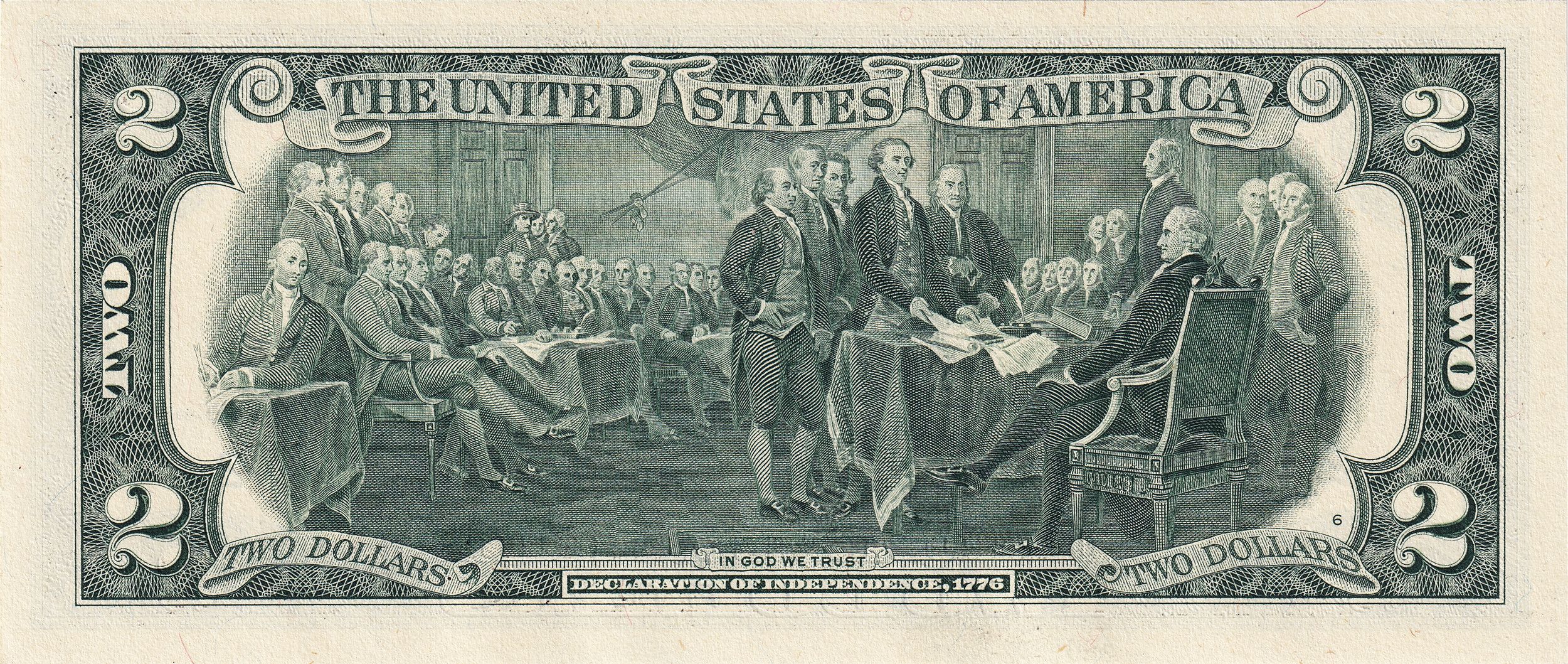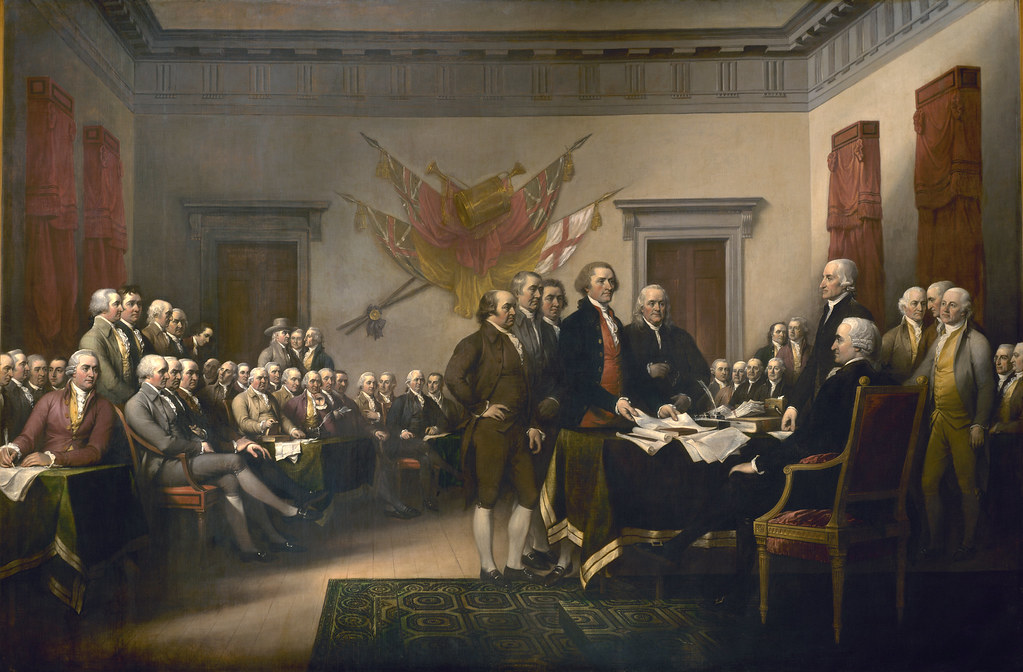John Trumbull. The Declaration of Independence. (c. 1817-1819) 144 BY 216 IN. United States Capitol Building Rotunda. (Click on the image for a high resolution version.)
John Trumbull (1756-1843) was born in the Colony of Connecticut, where his father was the Crown-appointed Governor and the only Royal Governor to support Independence for the Colonies.
Using his family’s close ties to England, Trumbull studied and worked in the London studio of the British portraitist Benjamin West. While in Europe he painted the portraits of John Adams, serving as the Ambassador to England at the time, and Benjamin Franklin and Thomas Jefferson, who were both Ambassadors to the French Court. These portraits would later be incorporated into The Declaration of Independence.
The scale and multi-figural nature of the painting are ambitious. There are 47 portraits, all done from life. The painting itself was made over a period of three years. However, Trumbull, in his career as a portraitist in the Colonies, had gathered many of the portraits over f decades and brought together his sketches for this piece.

A key to the painting with the name of each figure.
The painting was later used as the back of the two-dollar bill.

The Declaration of Independence was commissioned by the United States Congress to be hung in the Capitol Building. It is one of eight paintings of the same scale that Turnbull painted for the Rotunda:
- Surrender of General Burgoyne
- Surrender of Lord Cornwallis
- General George Washington Resigning his Commission
- Death of General Warren
- Death of General Montgomery
- George Washington before the Battle of Trenton
- Battle of Princeton
But, because Congress had only commissioned four paintings, the last four were sent or sold to other institutions.
